How Close to Plant Annuals? A Guide to Perfect Spacing
Planting annuals in your garden can add vibrant colors and help create a lively outdoor space. To make your garden flourish, you need to know how close to plant annuals. For the best results, space your annuals according to the guidelines on their plant tags. These guidelines usually recommend spacing them between 8 to 12 inches apart. This ensures each plant has enough room to grow while maintaining a lush and full appearance.
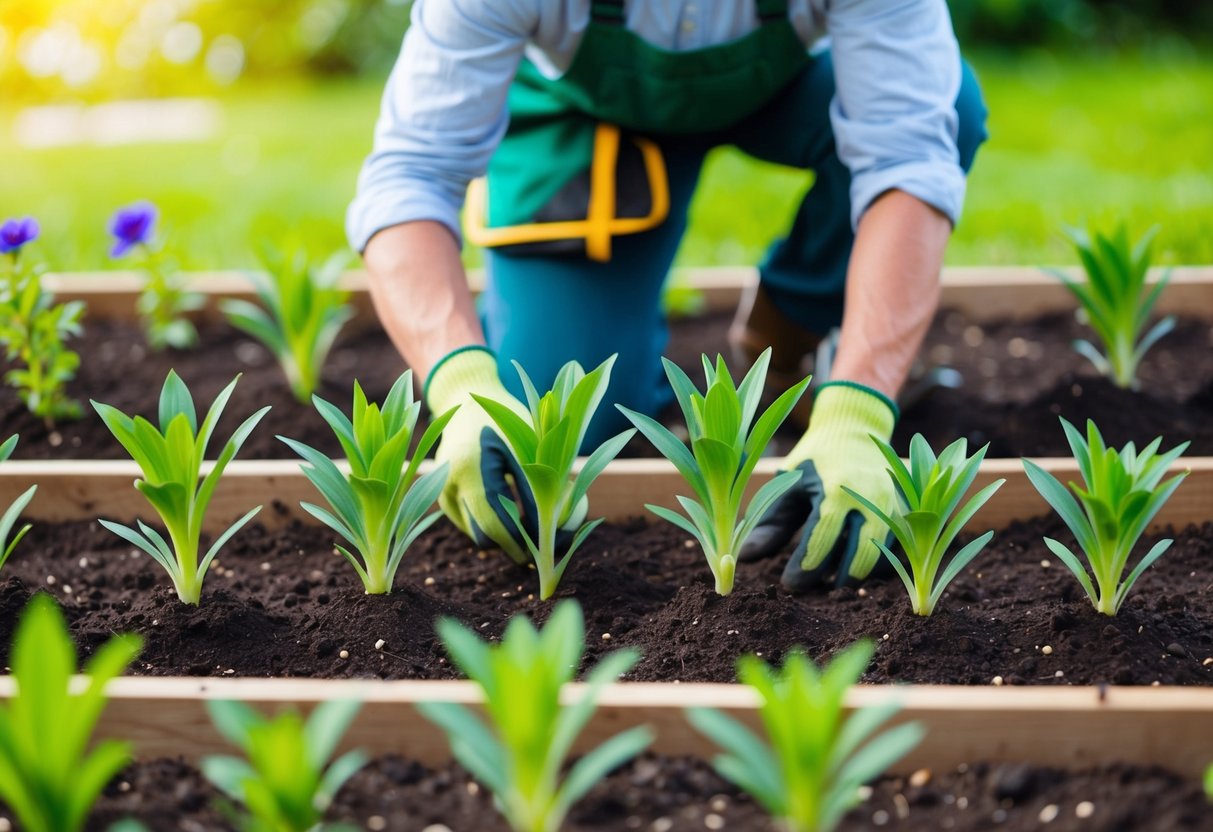
If your garden is in a region with a shorter growing season due to early frost, consider planting them on the closer end of the range. This will help create the lush look you desire, even with limited time. Check the plant tags or seed packets for specific spacing needs of different varieties. For instance, impatiens might need different spacing compared to marigolds, so specific spacing needs can vary.
By carefully considering how close to plant annuals, you can enjoy a beautiful and thriving garden. With just a little attention to the details on plant tags, you’ll be well on your way to becoming an expert in your own garden space. Enjoy watching your garden transform into a colorful oasis!
Choosing the Right Annuals for Your Garden

When picking annuals, consider the climate and sunlight in your garden. Different types of annuals have unique needs. Pay attention to the visual appeal of various colors and textures to create a vibrant garden.
Understanding Different Types of Annuals
Annuals come in different types, each with its own characteristics and needs. Hardy annuals like pansies and marigolds can withstand cool temperatures. They are perfect for early spring planting and often last until fall. On the other hand, half-hardy annuals such as zinnias and geraniums are slightly more sensitive to cold but can still tolerate a bit of frost.
Meanwhile, tender annuals like petunias and sunflowers need warm soil to thrive. You should plant them after the last frost. Some annuals are heat-loving, such as marigolds, which flourish in hot summer months. Knowing these differences helps you choose the right plants for your garden’s conditions.
Selecting Annuals for Sun or Shade
Sunlight plays a key role in plant health. Certain annuals love the sun, while others prefer shade. Sun-loving annuals like petunias and marigolds do well in full daylight. They often need six to eight hours of sun each day.
If your garden has more shade, consider plants like pansies or impatiens. These can get by with as little as four hours of direct sunlight. Mixing sun and shade-loving plants in different parts of your garden can create a balanced look. For more tips, visit this guide on sun-exposed gardens.
Color Combinations and Textures for Visual Appeal
Creating an eye-catching garden involves a mix of colors and textures. Bright, bold colors such as red geraniums or yellow marigolds can be a focal point. Use softer hues like pastel pansies to add calmness.
Textures also enhance your garden’s look. Mix the fine leaves of dusty miller with the broader leaves of zinnias. Combining plants with different heights and forms can add depth. Grouping them in clusters of odd numbers usually looks most appealing. This mix of color and texture brings life and personality to your garden.
Preparing the Soil for Annuals
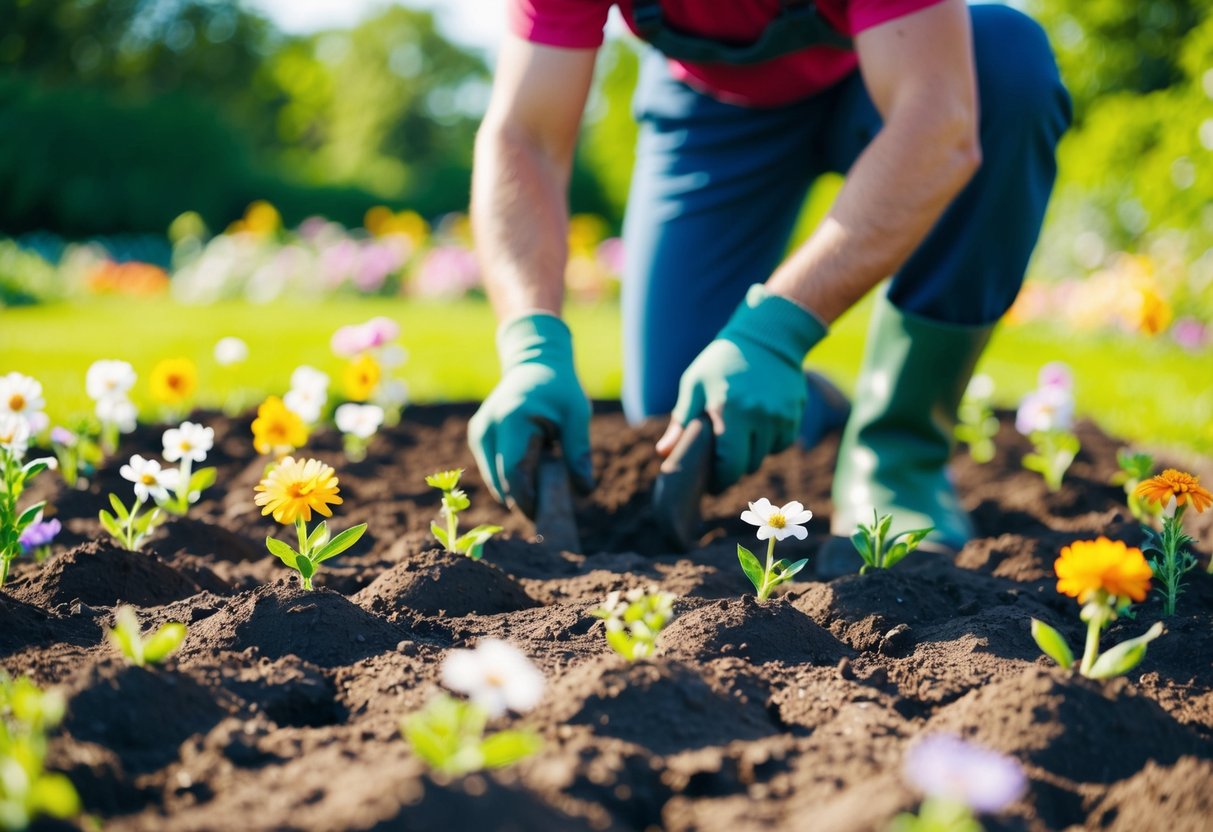
To ensure that your annuals thrive, it’s important to start with good soil preparation. This involves checking your soil’s condition and adding what it lacks to support healthy plant growth. You should focus on testing and improving soil quality with organic materials, which helps your annuals grow better and more vibrant.
Soil Testing and Amendments
Start by conducting a soil test to know what nutrients your soil might be missing. You can use a simple DIY test kit or send samples to a lab. This helps determine the pH level and nutrient content. Identifying deficiencies allows you to add the right amendments, such as lime to raise pH or sulfur to lower it.
Adding specific amendments like phosphorus or potassium can improve soil fertility. Use organic fertilizers sparingly to give your plants a healthy boost without harming the soil’s natural balance. A properly amended soil sets a strong foundation for planting annuals, ensuring they receive the nutrients they need throughout the season.
Incorporating Organic Matter
Adding organic matter such as compost or peat moss is an essential step in soil preparation. Compost improves soil structure, provides nutrients, and enhances water retention. Meanwhile, peat moss can help with moisture retention and aeration, making it a great addition to sandy soils.
Mix the organic matter into the top 8-12 inches of soil. This not only improves aeration but also fosters organic activity and nutrient availability. When planting annuals, incorporating these materials benefits the plants by creating a healthier environment for root growth. Be sure to avoid overcompacting soil to keep it loose and well-drained.
Planting and Spacing Considerations
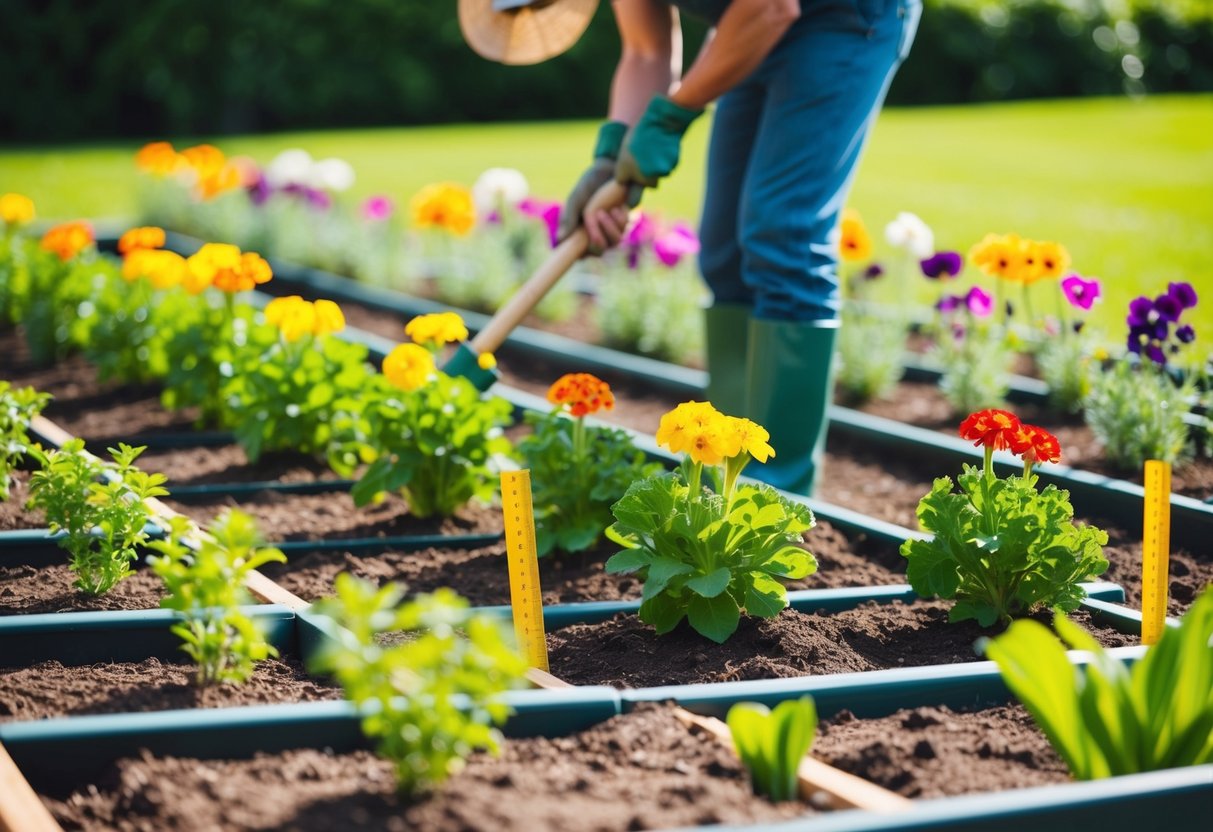
When planting annuals, the spacing and planting method you choose can greatly impact their health and appearance. Proper spacing helps ensure plants have adequate room to grow, while techniques like the “stab-and-plant” method can make the process simpler.
Proper Spacing for Healthy Growth
Annuals need enough space to grow and thrive. Crowded plants compete for sunlight, water, and nutrients, which can hinder their growth. When planting annuals in beds, refer to the plant tags. They often provide a range, such as 6-12 inches, indicating how far apart to plant them.
In cooler climates, opt for the lower end of the range. This allows the plants to mature fully before the first frost. If you’re planting annuals in containers, consider their mature size. A crowded container can lead to disease and poor blooming. Ensuring each plant has its own space helps promote good airflow and reduces competition for resources. This thoughtful spacing contributes to lush and thriving gardens.
Using the Stab-and-Plant Technique
The “stab-and-plant” technique is a quick way to plant annuals, especially in loose soil. With this method, hold a trowel with the blade facing down. Insert it into the soil, pulling back slightly to create a hole behind the blade.
Next, remove the annual from its container and place it into the hole. Firm the soil around the base of the plant to secure it. This technique is effective whether you’re planting in garden beds or containers. It’s simple to master and helps you plant more efficiently. Incorporating this method into your routine can make the gardening process faster and more enjoyable, allowing you to focus more on nurturing your plants. Always water annuals after planting for the best results.
Caring for Annuals Throughout the Season
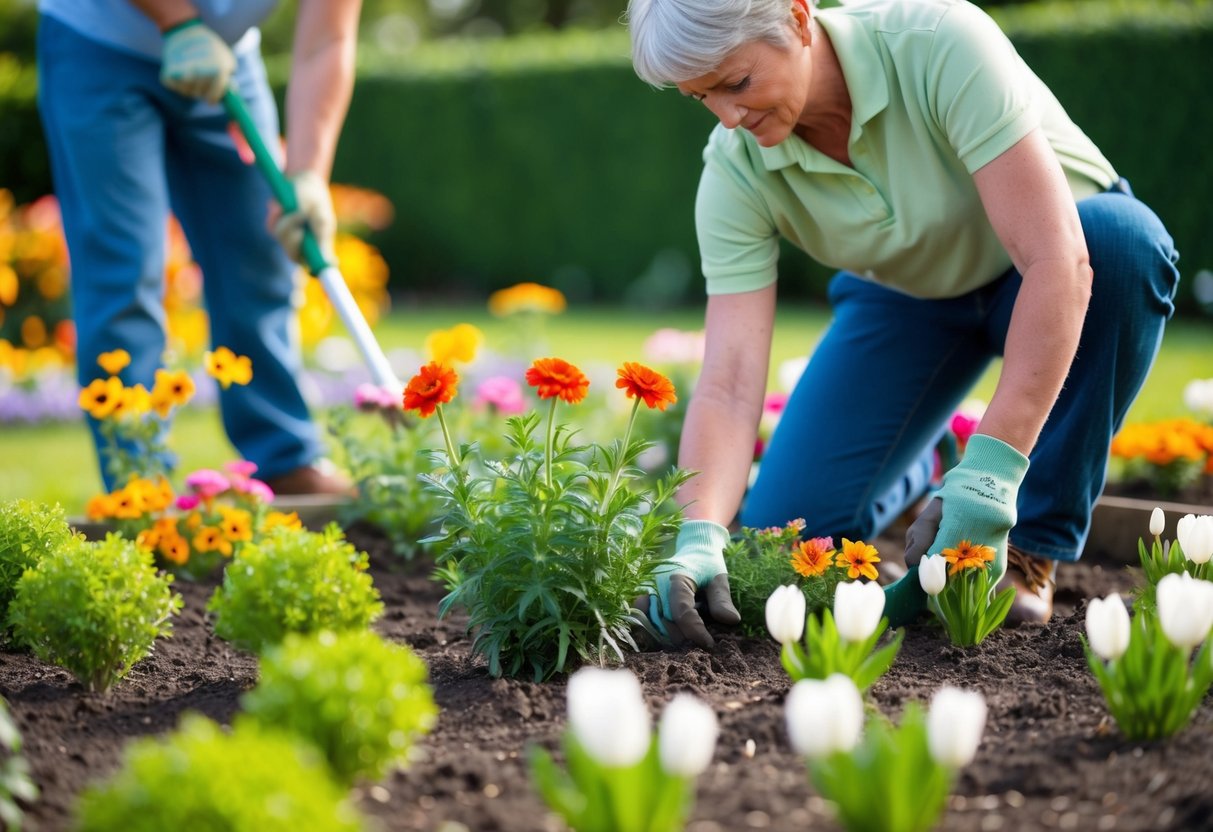
To keep your annuals thriving all season, focus on consistent watering, effective mulching, and proper fertilization. These steps ensure your plants stay healthy and vibrant, even in challenging weather conditions.
Watering Strategies for Optimal Health
Keeping your annuals well-watered is crucial, especially during hot and dry spells. Consider using drip irrigation or soaker hoses to provide a steady, gentle supply of water. These systems can help reduce water wastage compared to overhead watering and prevent issues like leaf spotting.
Water your annuals early in the morning to minimize evaporation. It’s important to check the soil moisture regularly. Insert your finger into the soil about an inch deep. If it feels dry, it’s time to water. Aim for deep, slow watering that encourages strong root growth.
The Importance of Mulching
Mulching is a great way to retain soil moisture and suppress weeds. Spread a 2-3 inch layer of organic mulch, like shredded bark or straw, around your annuals. This not only reduces water loss but also regulates soil temperature, keeping roots cool in the summer.
Mulch breaks down over time, adding essential nutrients to the soil. As your mulch decomposes, it can slowly enrich the soil with vital nutrients. Plus, a neat layer of mulch also enhances the appearance of your garden beds.
Fertilization and Nutrient Management
Annuals benefit from regular fertilization to support their fast growth and vibrant blooming. Use a balanced, slow-release fertilizer every few weeks. Follow the package instructions to prevent over-fertilizing, which can harm your plants.
Some gardeners find that liquid fertilizers offer a quick nutrient boost during the growing season. Deadheading, or removing spent blooms, can further encourage fresh flowers. This practice redirects energy back into new growth, keeping your garden looking fresh and colorful.
Attracting Pollinators and Managing Pests
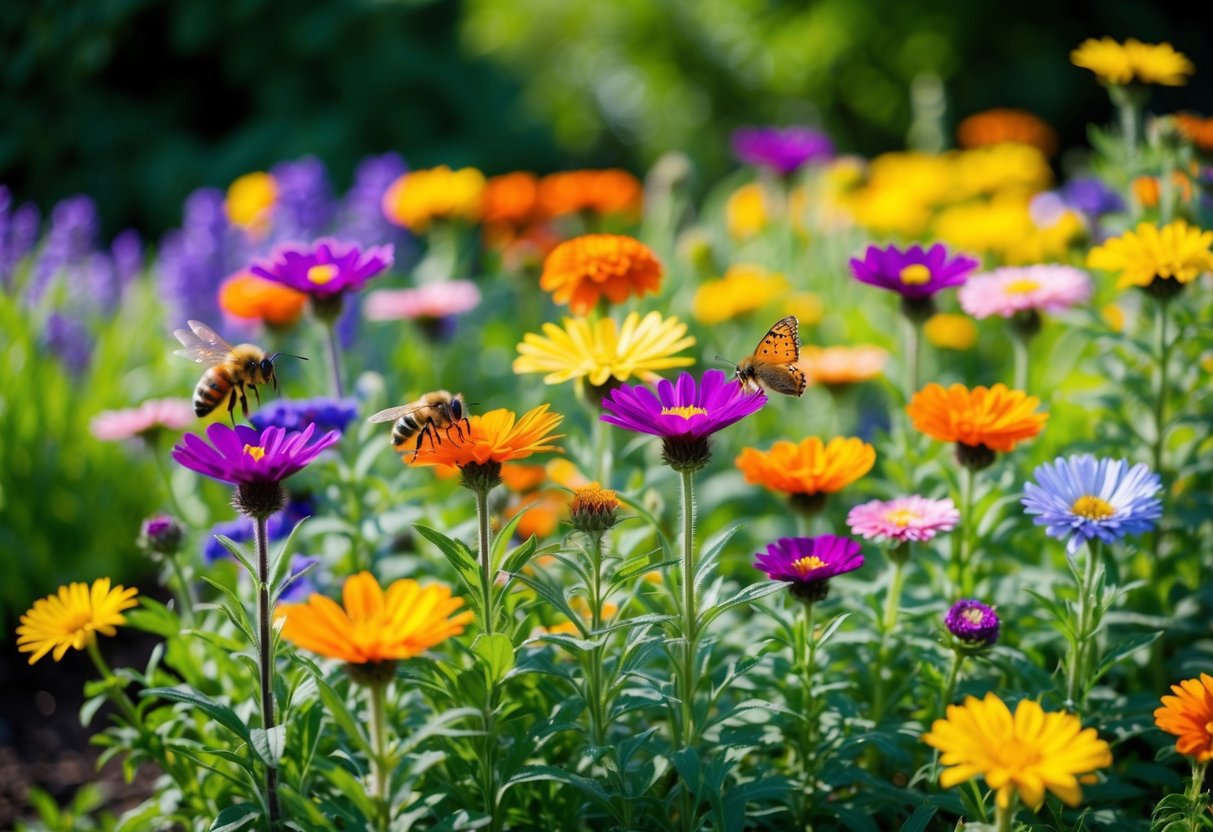
Creating a garden that attracts pollinators while controlling pests can be rewarding. Using the right flowers can invite butterflies, bees, and hummingbirds, while specific plants can help keep pests at bay naturally.
Flowers That Attract Butterflies, Bees, and Hummingbirds
Planting cosmos, salvia, and nasturtium can help draw these helpful creatures to your garden. Cosmos are great for attracting butterflies and bees with their bright blooms and prolonged blooming season. Meanwhile, salvia, with its tubular flowers, is perfect for hummingbirds and also draws bees. Nasturtium provides a colorful nectar source for butterflies and bees alike.
When planting these flowers, ensure they are in clusters of at least three feet wide. This makes it easier for pollinators to find and enjoy them as they gather nectar. You also benefit from having them bloom from early spring to late fall, creating a continuous food source.
Natural Pest Control and Prevention
To manage pests naturally, consider integrating some pest-repelling plants. Nasturtium is not only attractive to pollinators but also deters aphids, whiteflies, and other common pests.
Companion planting is key here. You can plant nasturtium near vegetables and other flowers to help protect them.
Using plants like marigolds might also keep nematodes away from your garden.
Maintaining a healthy garden also involves proper watering and ensuring good air circulation. This can prevent fungal diseases and reduce pest infestations, creating a balanced environment for both pollinators and plants to thrive.







